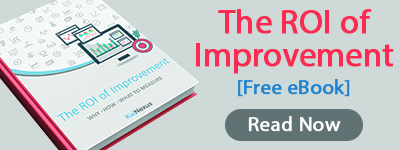 This morning, I thought it would be lovely to have an omelet. I had some fresh tomatoes, some leftover ham, and even some nice sharp cheddar. Once all of these ingredients were arranged on the counter and my stomach was grumbling,
This morning, I thought it would be lovely to have an omelet. I had some fresh tomatoes, some leftover ham, and even some nice sharp cheddar. Once all of these ingredients were arranged on the counter and my stomach was grumbling,
I reached in to grab the eggs.
I had no eggs.
I had no omelet.
Just like you can’t make an omelet without eggs, continuous quality improvement requires a specific set of ingredients to make it work. They include:
Leadership
It is up to leaders to define what quality means and instill the notion that most problems are the result of flawed processes, not flawed people. Quality improvement initiatives quickly fizzle without strong backing, investment, and the right behaviors being modeled from the top. In fact, leadership plays such an important role in CQI that organizations would do well to invest in developing effective behaviors in their continuous improvement leadership. A great place to start would be circulating this free eBook and this webinar recording.
Employee Engagement
Continuous quality improvement is not possible without employees who are committed to the effort. Employees are closest to the daily work of the business, so it makes sense that engaging them in CQI is essential to creating a culture of continuous improvement. Open communication is necessary because every member of the team must understand their role and how they and the organization will benefit from their efforts.
Structure
There must be a defined process for engaging in improvement in order to unify CQI efforts across the organization, as well as technology to support such cross functional collaboration. A central repository for improvement ideas, activities, and events makes it possible to keep everyone informed and ensure that all efforts from across the organization are aligned.
Data
When implementing CQI, you'll sometimes find that not all changes turn out to be improvements. Therefore, it is essential to establish benchmark metrics and objective goals for each improvement activity. Assumptions must be challenged and evidence-based decisions are required in order to make sure that each improvement activity is moving the organization in the right direction.
Recognition
The hardest part about continuous quality improvement is being continuous. It’s fairly common for an organization to get a few early wins, only to see the improvement efforts lose steam over time. Recognizing and rewarding the employees who archive their improvements helps maintain momentum. Organizations that broadcast results get more employees engaged and are able to make improvement a permanent part of their culture.
Consider each of these ingredients as you define your continuous improvement strategy. If you are missing any one, it’s no omelet.



Add a Comment